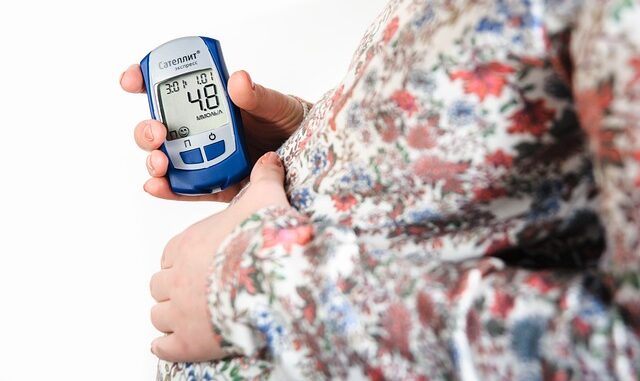
Summary
Empagliflozin and dulaglutide are two newly funded medications offering new treatment options for individuals with type 2 diabetes. These medications work through different mechanisms to improve blood sugar control and offer additional benefits such as weight loss and reduced cardiovascular risks. The funding for these medications provides increased access to important therapies for eligible patients.
Secure patient data with ease. See how TrueNAS offers self-healing data protection.
Main Story
Okay, so, new diabetes meds are making a real difference these days. It’s pretty encouraging to see the advances, especially when you consider the impact on blood sugar control and overall health for folks with type 2 diabetes. And, good news, empagliflozin and dulaglutide – two relatively new medications – are getting funded, so more patients are able to access them. Which is just great, because everyone deserves the best possible care, right?
Empagliflozin: A Different Kind of Approach
Empagliflozin’s in the SGLT2 inhibitor family – sounds super sci-fi, I know! Basically, it targets the kidneys, which is kinda cool. It blocks a protein that reabsorbs glucose back into your blood stream. By blocking this protein, you get the sugar that would have been reabsorbed, excreted through urine, effectively lowering your blood sugar levels. It’s like, flipping a switch and flushing all that extra sugar. One of the other advantages is you get some weight loss and a dip in blood pressure, which is always welcome when dealing with type 2 diabetes. Plus, and this is big, it’s linked to better heart health! Fewer deaths from heart issues in patients with type 2 diabetes who had existing heart disease. Honestly, pretty amazing. Oh, and it’s used to reduce hospitalization and cardiovascular death in those with heart failure as well. That said, it isn’t for everyone: if you’ve got type 1 diabetes or need insulin, this isn’t the drug for you.
Dulaglutide: Boosting Your Natural Insulin Response
Dulaglutide is another class, it’s a GLP-1 receptor agonist. It’s a once-a-week injection, which is definitely a plus for convenience. What it does is mimicking the effects of GLP-1, which, your body produces naturally, helping regulate blood sugar. Dulaglutide is like a prompt for your pancreas, telling it to release insulin after you eat. It also slows down food absorption and even curbs your appetite. So, all that adds up to better blood sugar control and, often, some weight loss. I remember once, I was talking to a nurse, and she mentioned how much easier it was for her patients to manage their diet when they were on dulaglutide; it wasn’t a magic bullet, but it definitely helped curb those cravings. And get this, it also is shown to lower the risk of things like heart attacks and strokes, which is awesome. If you have heart disease, this medication is certainly worth a conversation with your doctor.
More Access is a Step Forward
These medications are funded for specific patient populations, those with high HbA1c levels, folks at high risk of or with heart disease, diabetic kidney disease, or heart failure, and, importantly, Māori or Pacific ethnicity. So, it’s making sure it’s getting to the people who are most likely to benefit. Though you can’t get both medications in one, you can choose either to get the treatment plan that works for you. The funding, well, it’s a big deal.
What’s Next?
It’s exciting to see where diabetes management is heading. With these new medications, along with lifestyle changes, individuals will have far better control of their blood sugar levels, and they can address health concerns associated with type 2 diabetes. As research moves forward, I’m sure we’ll see even more options out there for enhancing the quality of life for people living with this condition.


Given the focus on specific patient populations, what mechanisms are in place to ensure equitable access and culturally sensitive education regarding these medications, particularly within Māori and Pacific communities?
That’s a really important question! Beyond funding, healthcare providers are working with community leaders to tailor educational materials and approaches. We’re also seeing increased efforts to train healthcare professionals in cultural competency to better serve Māori and Pacific patients. Would love to hear any specific examples of successful initiatives you’ve encountered!
Editor: MedTechNews.Uk
Thank you to our Sponsor Esdebe
“Funded for specific populations, eh? Is access really equitable if it hinges on ethnicity or pre-existing conditions? Or is it just a fancy way of saying some lives matter more, when profit margins dictate.”
That’s a really valid point about equitable access. It’s a complex issue. The intention behind targeting specific groups is to address disparities where certain populations experience higher rates of disease or face barriers to care. By focusing resources, the goal is to level the playing field, but it requires constant evaluation to ensure fairness and avoid unintended consequences.
Editor: MedTechNews.Uk
Thank you to our Sponsor Esdebe
So, sci-fi kidneys flushing sugar? I’m picturing tiny robotic plumbers hard at work. I wonder if they take coffee breaks and if future diabetes management involves voice-activated insulin pumps.
Haha, I love the image of tiny robotic plumbers! Voice-activated insulin pumps could definitely be a game-changer. Imagine saying, “Okay, pancreas, time for a little boost!” What other tech advancements do you think could revolutionize diabetes care in the future?
Editor: MedTechNews.Uk
Thank you to our Sponsor Esdebe
The discussion of SGLT2 inhibitors targeting the kidneys is fascinating. Exploring personalized medicine approaches, tailoring treatments based on individual kidney function and genetic predispositions, could further optimize blood sugar control and minimize potential side effects in the future.
That’s an excellent point about personalized medicine! Imagine tailoring SGLT2 inhibitor dosages based on individual kidney function. Genetic predispositions could also play a role in predicting treatment response. This could really optimize blood sugar control and minimize side effects. Thanks for highlighting this important area for future research!
Editor: MedTechNews.Uk
Thank you to our Sponsor Esdebe